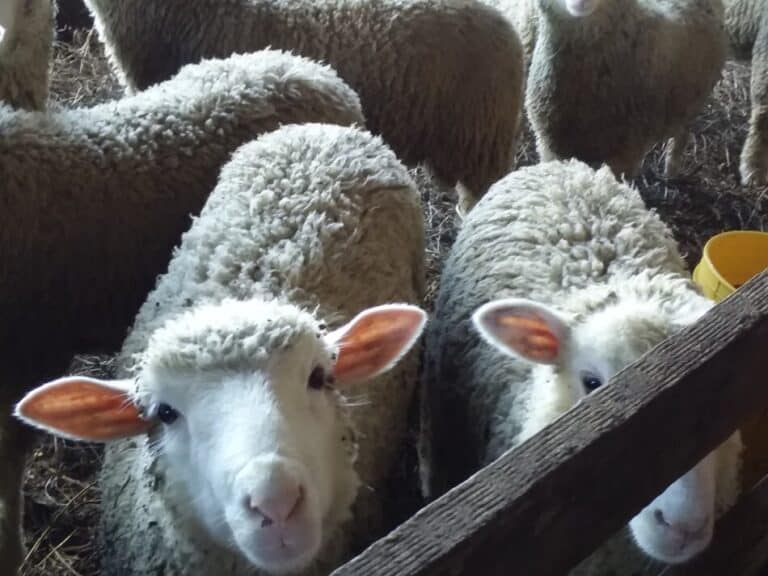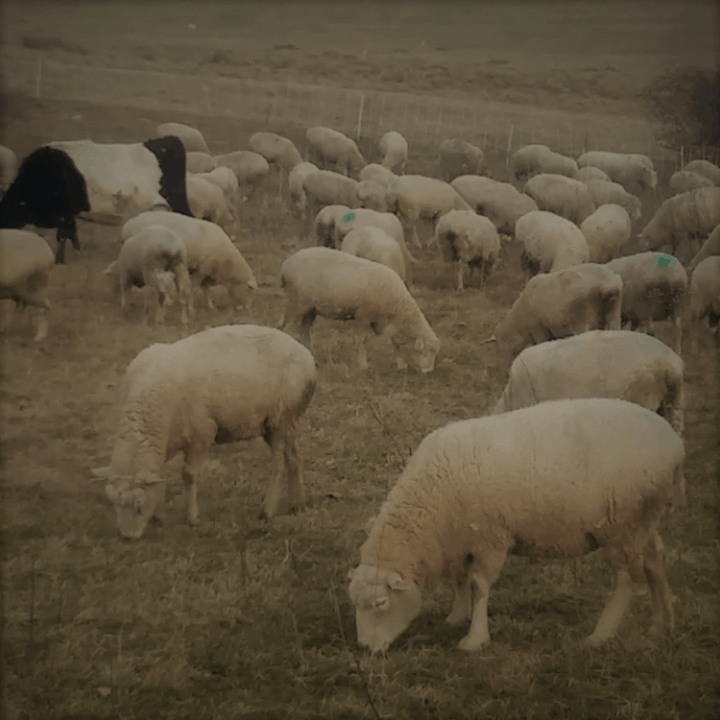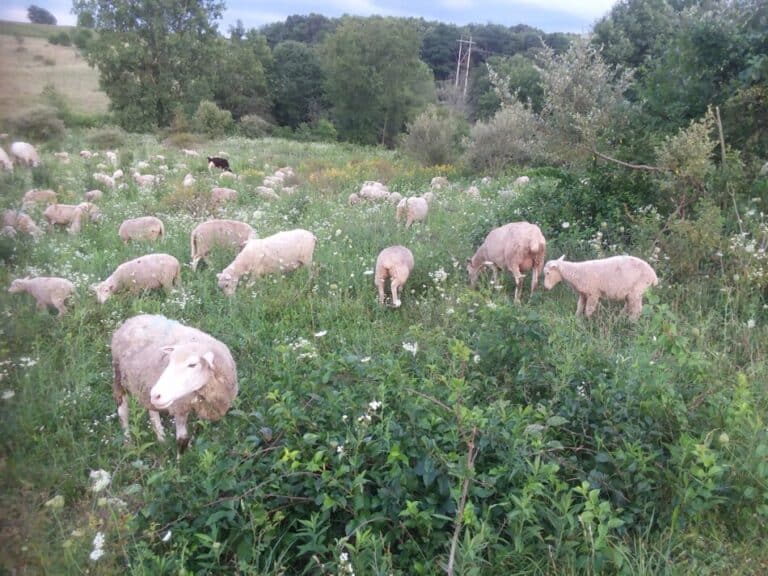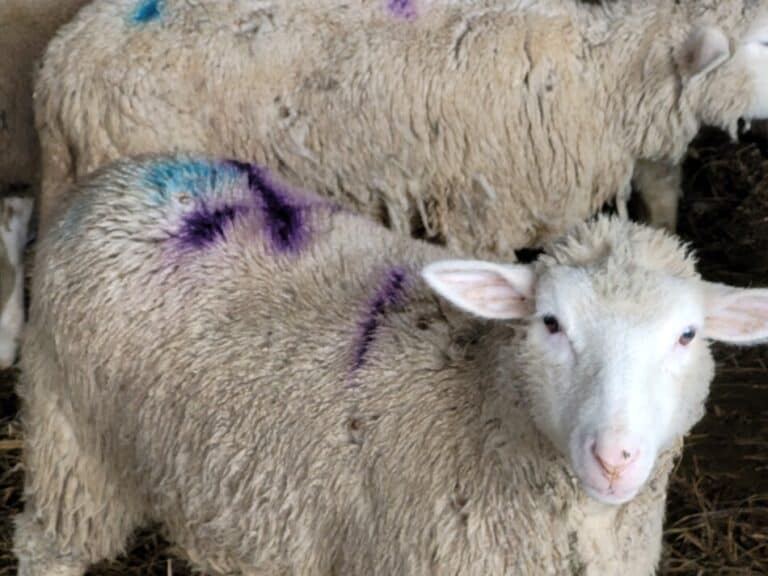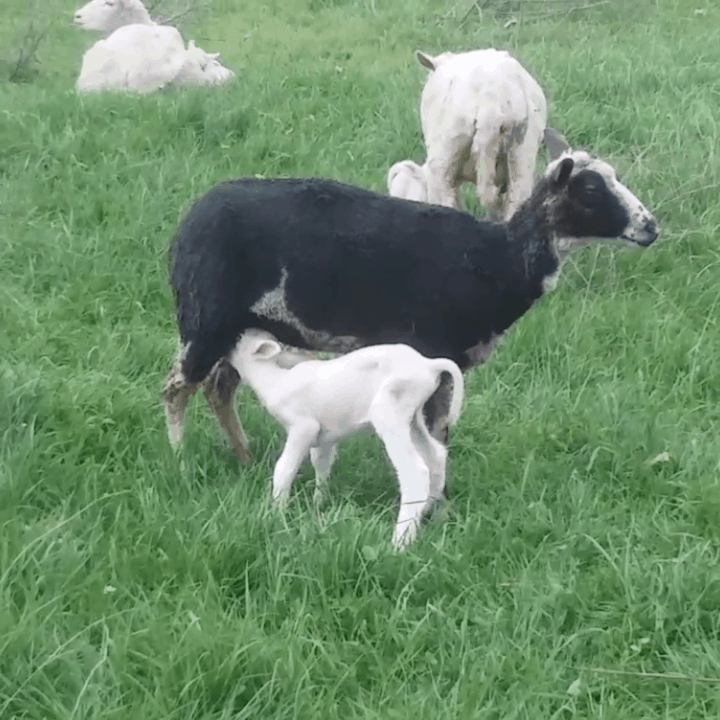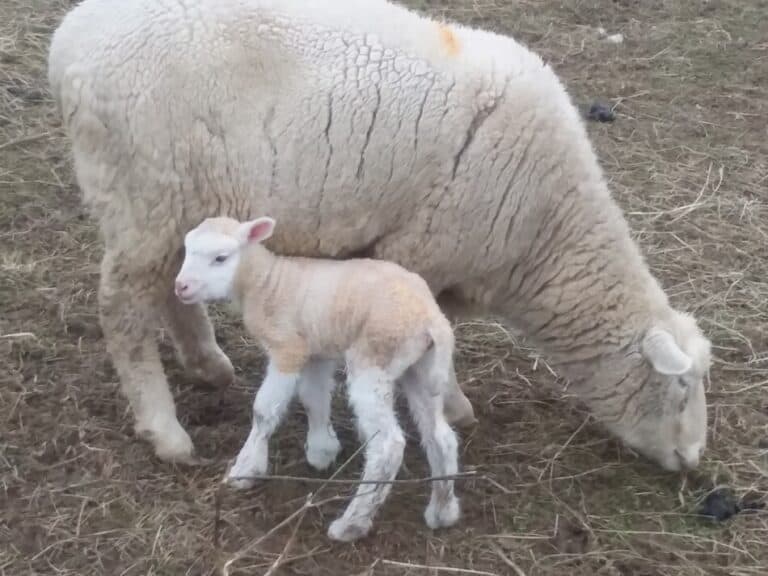5 Reasons Why Lambs Would Limp (and what to do about it)
Lambs sometimes have foot or leg problems, maybe it’s because they are so much smaller than their moms or maybe they are just a little reckless!
Either way, you need to figure out what is wrong so you can get it fixed up and healing. To do that, you need to know what’s causing the limp in the first place.
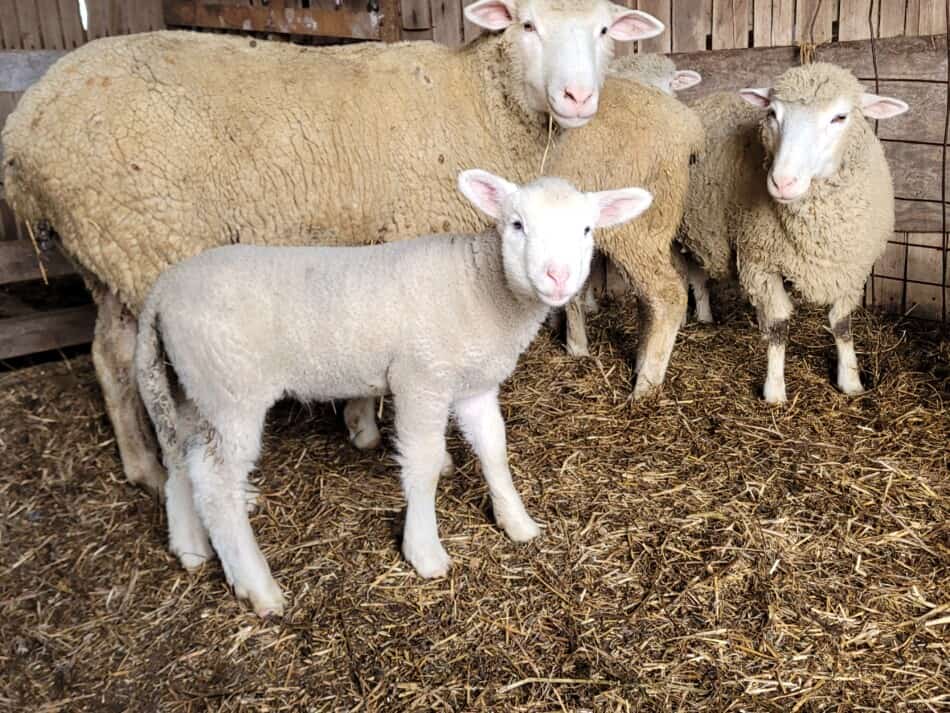
Why Do Sheep Need Shepherds? is an article I wrote going over many of the things that people do for sheep, dealing with injury is just one of many tasks for a shepherd.
Injury to hoof, leg or shoulder can cause lamb to limp
An injury to the hoof, leg or shoulder of a lamb can cause the lamb to limp.
The catch here is to figure out which one you are dealing with and if it is an isolated problem or you need to fix something in the flock before you get more cases of limping lambs.
If the injury is in the foot, the lamb will hold the foot up when he walks and be able to work the rest of the leg, like the knee or the hock as normal.
Lambs with foot injuries can still use their injured foot, they just use it delicately, it’s more like they are tip toeing around.
They can also eat on their knees rather than standing, if taking the pressure off of the foot makes them more comfortable.
If the injury is in the shoulder, the whole leg will move little, which makes sense since limiting movement also limits pain to the lamb.
This lamb will make his attempts to walk around without additional movements of the knee, he wants to keep the whole leg still and hobble along with as little extra swinging of the leg as he can.
The last injury option is a leg injury, which could be that the lamb is just sore, he got cut on something or that the leg is broken. You really don’t know until you get ahold of him and see what’s what.
We have found that breaks below the knee or hock can be splinted up fairly easily and those seem to heal well. Above the knee or hock are tough since there is no good way to hold the splint.
If you need a splint, put some padding into it to cushion the leg, we use a length of PVC cut into a C and old socks for padding and duct tape it well. We cut the splint off in two weeks, since lambs grow so fast.
Anytime you have an open wound in the growing season you also have flystrike potential. You’ll want to check back on the injury and see if it is healing well, especially if the skin was broken.
How To Tell If Sheep Are Stressed gives you some things to look for in your flock to see if you need to adjust your management to keep the flock on track for the year.
Foot infections can cause limping
If the lamb in question has a foot infection, that infection can cause it to limp, anywhere from slightly to severely.
Foot infections can come from hoof rot, foot scald, embedded objects (like a thorn) or flystrike. You’ll need to grab the lamb and see his feet to figure out what you are dealing with.
Foot scald and foot rot cause limping in lambs
Foot scald makes the skin up in the middle of the hoof red and sore. This is caused by a bacteria in the soil and can happen to sheep of any age, not just lambs.
Foot rot is the smelly mess that you notice when you get that sore foot anywhere near you!
Be careful here, foot rot can spread from sheep to sheep on your shears so search around online to get the scoop on how your area should handle feet infected with foot rot.
The reason that foot scald and foot rot are so often talked about together is that scald often leads to foot rot, so treating one should help you reduce the chances of it progressing into foot rot.
Below are two options to get you started on how to treat foot scald or foot rot, if that is what you find when you look at the hoof. Read both to see the pictures and get both sets of treatment instructions.
NADIS.org.uk Lameness Control In Sheep is an informative article with detailed pictures showing the differences between foot scald, rot and other hoof problems.
Managing Foot Rot and Scald in Goats and Sheep is a University of Alabama article giving you practical steps to take if you think your lamb is limping from either foot scald or foot rot.

Is something stuck in the foot?
Is there something stuck in the hoof? If so, once you get the offending object out the lamb should heal up and be walking normally in a few days.
Please be aware that if this happens in the summer, you now have opening for flystrike.
Are you dealing with flystrike?
The final infection based cause for limping that we know of is flystrike. If you have not seen maggots in hooves before, prepare yourself, it’s gross.
Have a spray on insecticide ready and douse them good. We like Catron IV the best, but have had a hard time finding it this past year.
You should know that normally flystrike in feet is a secondary thing, chances are the lamb had something wrong first that caused irritation, like foot scald or foot rot, that called in the blowflies.
If you have not dealt with flystrike before, you should know that it goes from you don’t see anything to crazytown full of maggots in just a few days.
Some sheep seem to be prone to flystrike and others not so much, even within your own flock.
If you mark the lambs and ewes you treat, you’ll find some of them crop up repeatedly throughout the season. Cull these lambs and their moms, so you don’t have to keep dealing with these genetics.
Why Do Sheep Get Maggots? is my article on flystrike specifically, if you want to find out more on this specific problem.
Is something wrapped around foot or leg?
Another problem that we have seen a few times is something wrapped around or stuck on the foot. The most common culprits here are wire and twine, but it can also be bale netting.
For some reason this tends to happen to ewes more than lambs, at least for us, but since you could see it in your flock, you should know to look for it.
What we most commonly see is a thin fragment of plastic twine that get somehow wrapped up around one part of the hoof and for goes through the middle, which makes it cut into the skin and hurt.
The good news here is that when you cut off the twine or wire, your lamb should rebound pretty quickly.
Malformed legs or feet
Occasionally, you’ll see a malformed leg or foot, which can cause limping.
We have seen out of alignment legs, usually a knee that is dented in noticeably, which can make the lamb a bit slow but it normally straightens out on it’s own.
Sometimes the lamb grows to market size with the crooked leg staying crooked but as long as the lamb seems fine otherwise we don’t worry about it a ton.

Overgrown hoof walls can cause limping in lambs
Overgrown hoof walls can happen in lambs, especially if you have your lambs inside on feed, where they are doing less walking to wear down their feet and getting a higher energy ration than just pasture.
We normally do not see overgrown hoof walls in younger lambs or lambs that are kept outside, this is mostly an inside the barn sheep problem.
If your lambs are older and are getting a high energy ration (being fed grain), they can have overgrown hoof walls that will make the rest of their foot sore when they walk.
The great news here is that you can quickly and fairly easily fix the problem of overgrown hoof walls in your lamb.
All you need is some hoof trimmers, usually called foot rot shears (whether you are using them for foot rot or just trimming, you still need the same shears) and an idea of what the hoof shape should be.
You need to trim off the overgrown wall of the hoof so that the bottom of the hoof sits level on the ground and the lamb can walk normally.
Take a few minutes and look at the sheep or lambs in the pen with good feet and see the differences in hoof shape. It’s important to know what you are aiming for before you start trimming.
If you are new to sheep, don’t be surprised if the lamb is not happy to be caught and you should also know that the trim probably does not make the lamb walk better immediately.
It took some time to get sore enough to limp, so give it a day or two to reduce the tenderness of the area and you should see a noticeable improvement. Ours tend to be walking noticeably better by the next day.
Eating too much grain at once
To be clear, this one is not really limping, it is more like the lamb looks like it is walking oddly, more like stilted movements rather than limping, but I put this in just in case you haven’t found your answer yet.
When lambs eat way too much at once, which is much more likely on grain, they get themselves sick, just like pigging out at Thanksgiving!
Even if it seemed like a good idea at the time, afterwards both you and the lamb feel sick and move oddly.
Is this possibly what you are seeing in your lambs? If so, you have another problem. All that extra grain is going causing digestive problems, which can be deadly in lambs. Call your vet for advice on this one.
